| LESSON: A Birthday Card | School: №13 | Lesson: 11 |
| Date: 13.02/14.02 | Teacher name:Мавланова Д |
| CLASS: 2 девг/а
| Number present: | absent: |
| Learning objectives(s) that this lesson is contributing to
| 1. listening to a description and labeling a picture 2.developing language skills. 3. say topic words with clear and pronunciation 4. say expressions clearly |
| 2.L1 understand a range of short basic supported classroom instructions 2.S4 respond to basic supported questions giving personal and factual information 2.UE8 use simple imperative forms [positive and negative] for basic commands and instructions 2.UE9 use common present simple forms [positive, negative, question] and contractions to talk about what you want and like and habits and facts |
| Lesson objectives | All learners will be able to: |
| Sing a song’’ Hello’’ To introduce the pupils to the English alphabet; To present and prictise words To identify A Birthday Card |
| Most learners will be able to: |
| To practise greetings with teacher’s support Using plural of nouns |
| Some learners will be able to: |
| Make simple sentences with teacher’s support |
| Language objectives: | Learners can: - recognize sound and name the letters of the alphabet; -greet one another using phrases: Counting Telling age Congratulating - pronounce familiar words and expressions intelligibly; - make introductions and requests in basic interactions with others. |
| Key words and phrases: Counting Telling age Congratulating |
| Useful classroom language for dialogue/writing: oral |
| Discussion points: |
| Can you say why we greet one another? |
| Writing prompts: |
| Assessment for Teaching | Criteria based assessment. Assessment criteria: Introduce himself/herself clearly. Descriptor: A learner greets himself/herself correctly; Counting, Telling age, Congratulating Self-assessment: Hand signals |
| How to overcome barriers in learning English | -Smile, create a favorable atmosphere in class. -Encourage learners to dialogic learning. -Use their mother tongue to start. |
| Value links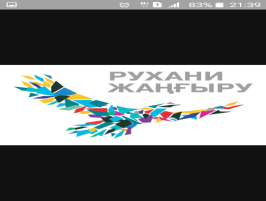 | A secular society with high spirituality Development of the national system of education and training |
| Cross curricular links | English |
| ICT skills | Pictures, slides, CDs |
| Success criteria | Pupils achieve if: Can pronounce words Can listen sounds |
| Previouslearning | A Birthday Card |
| Plan |
| Planned timings | Planned activities (replace the notes below with your planned activities)
| Resources |
| Beginning 3-min | Learners are introduced with the lesson objectives /D/ Organize the lesson Greetings Hello, Good morning pupils! How are you? Fine, thanks. Sit down. Warm up. Brain storming. Come on, everybody, Stand up, stand! Stamp your feet And clap your hands! Come on, everybody, Sit down, sit! Clap your hands And stamp your feet!
|
CD-player
|
| Middle 7-10min
5-min
15-min | An activity to revise the vocabulary from the previous lesson. Divide the class into two teams. A and B. say a word from the previous lesson (ex. 1) e.g. spoon. The pupils quickly draw a spoon. The first pupil to draw a spoon wins a point for his |her team. Repeat the activity with the remaining words and pupils. The team with the most points wins. Presentation and practice (Activities to present and activate the new language) 1 Talk with your friend Pupils’ books closed. Put up the poster on the board. Point to the camels and say the words. The pupils repeat, chorally or individually. Then, point to the Birthday Cardand elicit the corresponding word from the pupils.
Have you rest? Double, double, this, this Double, double that, that Double this, double that Double, double, this, that Pupils’ books open. Refer the pupils to the pictures and explain the activity. Point to the first picture and ask: Then, in pairs, the pupils ask and answer questions about the Birthday card. Go around the classroom providing any necessary help. Ask a few pairs to report back to the class. Answer key 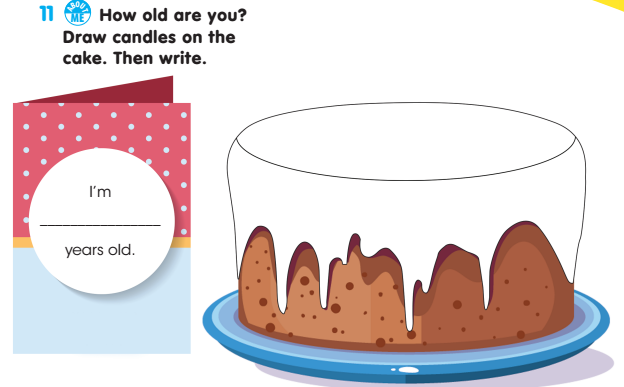
/D/ Teacher demonstrates and drills basiclessons, prepositions of place using visual at board. 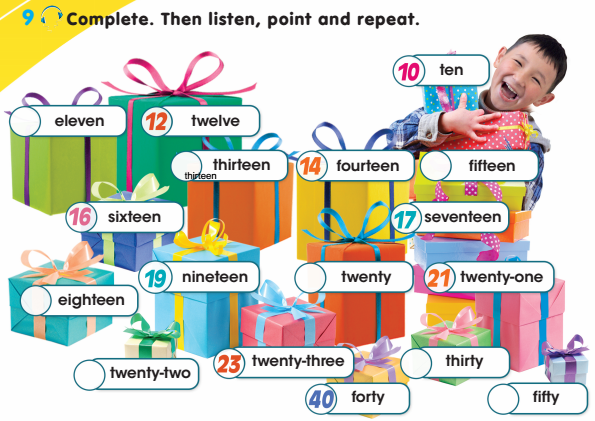
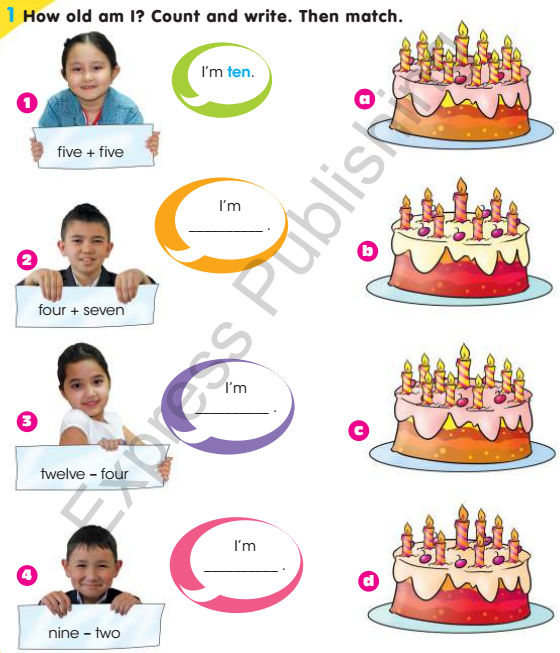
/D/ Teacher demonstrates simple plus/minus sums producing written numerical answers. /W/ /f/ Then learners make up the clusters. Learners move the characters. Explain the learners that they are going to describe the jobs in the following list but without saying the name of the job and explain their choices. A) Look at the pictures. Names the objects. Say what colours they are. Example: 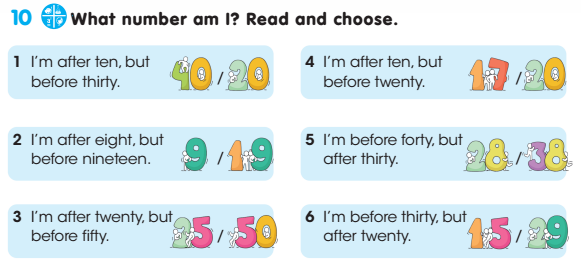
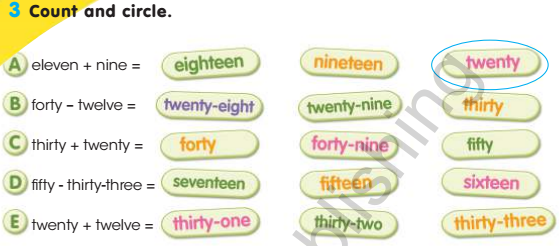
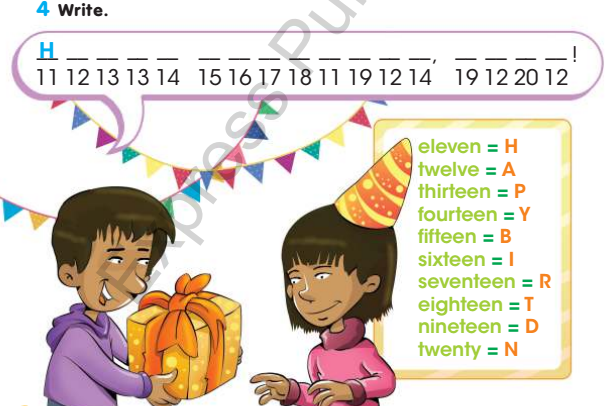
|
Flashcards Watch Slide
Flashcards Watch Slide
Song ten Little numbers http://www.youtube.com/watch?v=BYIrkMV9uug
Clusters, flashcards
|
| End 10-min
2-min | (An activity to consolidate the language of the lesson) Write the name of an animal vertically on the board, e.g. DEER. Invite a pupil to come to the board and odd on another word from the lesson, either vertically or horizontally. Continue until the names of all the animals are written on the board. e.g. 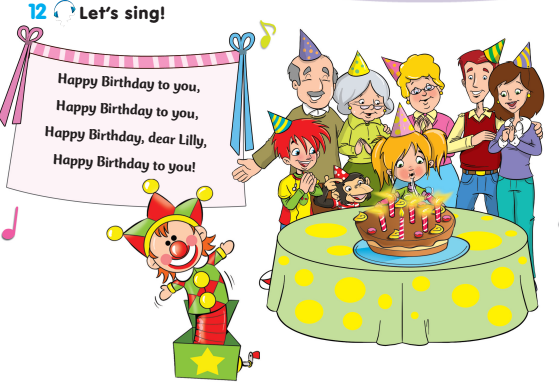
Activity book (Optional) If you wish, you can do page 79 from the Activity Book during this lesson or the next one. At the end of the lesson, the T asks the P to assess the lesson using a technique 9-10 smiles- “5” 8-6 smiles –“4” 5-3 smiles - “3” The song “Good bye” | picture
CD - player |
| Additional information |
| Differentiation – how do you plan to give more support? How do you plan to challenge the more able learners? | Assessment – how are you planning to check learners’ learning? | Cross-curricular links
Health and safety check
ICT links
Values links |
| More support: Provide less ablelearners with the foursentences written on aworksheet so they canlisten and read.
Create mixedability groups fordiscussion. Ensure they
are not always in the roleof timekeeper.
More able learners:
At start of lesson, theythink of several reasonswhy pictures could be theodd one out.
They sharefurther facts about naturaldisasters. | Monitor learners to checkthey can pick up specificdetails when listening tofacts reported from map,facts about naturaldisasters; detail fromvideo. Note those who
found listening for detailhard.
Observe learners whenparticipating in discussion.Did the group dynamicswork? Did each learnercontribute to thediscussion? If not, whynot? (e.g. didn’tunderstand what to do; not
so confident speakingEnglish; not interested intopic; other)
Record what theyconsidered they hadlearned from the lesson.
Could they express whatthey had learned aboutcontent and language?
Could they express whichskills they had developed?
| Learners work in groups apply skills and knowledge to a practical and cooperative task, and produce their own materials. All of these lesson correlate with the aims of critical and creative communication set out . Job and work: developingvocabulary range tocommunicate knowledgeof natural disasters;
looking at a interview for jobs showing recentnatural disasters andinterpreting information onit.
Respecting diversity ofopinion |
| Reflection Were the lesson objectives/learning objectives realistic? What did the learners learn today? What was the learning atmosphere like? Did my planned differentiation work well? Did I stick to timings? What changes did I make from my plan and why?
| Use the space below to reflect on your lesson. Answer the most relevant questions from the box on the left about your lesson. All lesson and learning objectives were met. The lesson was exciting. Learners were always in action and interaction. Game style lessons prove to be very useful. |
| Simulation game created this opportunity for them.
|
| Summary evaluation
What two things went really well (consider both teaching and learning)? 1: Simulation game 2: Video and vocabulary prior to the game What two things would have improved the lesson (consider both teaching and learning)?
1: Better level of English language of learners. Inability of communication in English language of some learners keeps behind more able ones as well. 2:Learners came late after flash mob break. This usually happens. What have I learned from this lesson about the class or individuals that will inform my next lesson?
|






















